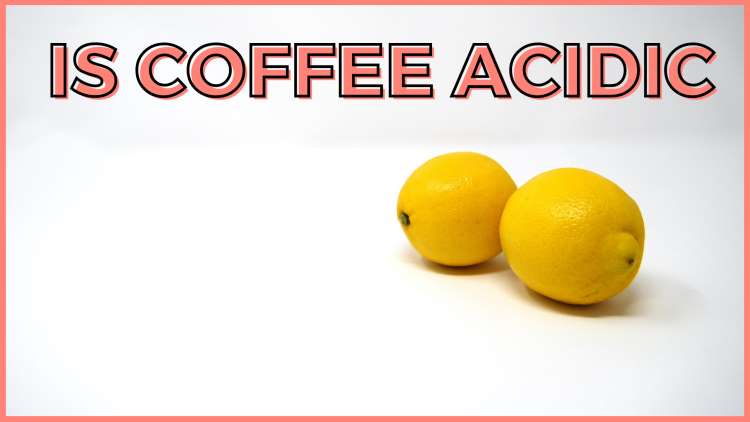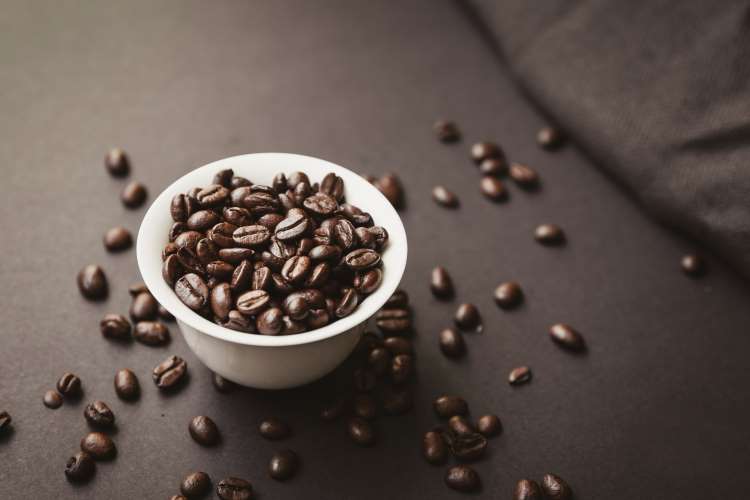Is Coffee Acidic: The Simple Truth May Both Surprise and Excite You

Wait! Before you let the word Chlorogenic acid throw down your cup of coffee, we at Black Ink Coffee are here to explain the whole issue about coffee acidity, and help our readers enjoy their morning brew without any stomach pain. Whichever way you drink it, and no matter the type, a large part of your experience drinking your favorite coffee beans is determined by the acid that coffee contains.
But have no fear, coffee drinkers! Just because coffees rank as an acid on the Ph scale, the fact is you don't need to be walking on egg shells, or worrying about acid reflux the rest of your life. So, is coffee acidic? Let's get to it!
Our Low Acid Solution →Is Coffee Acidic
Yes, coffee is acidic, but we are going to shed light on the science behind what acidity in coffee really means, and the ways acidity level can differ by the roasting process, the coffee grounds used, and the ways you can prevent any possible health conditions or harm to your body as a result.
Once you understand what makes coffee acidic, there are many things you can do to lower the acidity, and still enjoy your favorite beverage.
How Acidic is Coffee

Just like any drink, from orange juice to cold brew coffee, each liquid have different ph levels to determine if they rank as an acid on the ph scale.
Although coffee qualifies on the acids side of the spectrum, according to the tracking technologies, the acid in coffee keeps it somewhere in the middle, nowhere near orange, or lemon juice.
There are nine different acids which are released during the brewing process, each of these compounds contributes to a different flavor note, and overall taste sensation you have when drinking the specific roast.
Along with Chlorogenic acids, there is also Malic acid, quinic acid, acetic acid, citric acid, as well as others to give a coffee roast its unique body and flavor. A large part that determines whether a coffee is low acid or not comes down to the coffee beans used, and largely the roasting process.
So while coffee is acidic on a general level, the acidity in coffee can differ widely. If you personally have any digestive system issue with stomach acid or gastric acid, we will also explain how you can get around these side effects with a more low acid coffee brew.
Roasting Acid Coffee
If your preferences lean towards dark roast, the acidity level in your coffee cup will generally be lower. This is because the roasting process for the beans is longer and at hotter temperatures than a light roast type of coffee. Whichever the green beans, whether Robusta beans or arabica beans are used, this causes Chlorogenic acids to lower.
On a sidebar, this also helps to explain why lighter roast coffee brands usually get a comparison to citrus fruits. While acidity is typically a highly sought after commodity when it comes to coffee, it doesn't sit well in the stomach of some.
Brewing Process
The way a coffee is brewed also plays a significant role in whether it is classified as an acidic coffee. Beans that are brewed for longer times make for a low acid coffee. This is why a cold brew will generally have less acidity overall.
So, along with roasting time, the brewing time, regardless of the ground coffee you are using will help to lower the acidity.
Size of the Grounds
Not to get mathematical here, but even the surface area of the grounds you use can have an impact. coffee grounds that are smaller, generally contain higher levels of acidity.
This is because the smaller the coffee ground size allows for more acids to get extracted from the grounds. So, if you're looking for low acid coffee, it is wise to generally opt for coarse, over finer grounds.
Impacts on Health

Although chlorogenic acid, quinic acid, and the other acids found in a cup of coffee are generally okay for you, there are some possible side effects from acidity you should know about. On top of that, we can also cover the ways people can avoid the potential pitfalls of a high ph, and continue to have a pleasurable coffee experience.
So in spite of the delicious taste, it is possible to experience irritable bowel syndrome, a stomach sensation of nausea, and even acid reflux.
While coffee may not solely be the cause of these health issues, they can certainly exacerbate pre existing conditions. So, for people who are experiencing these issues as hard as it may be, it could be beneficial to avoid coffee altogether, as well as other things high in acidity.
But if you're one of those people who wants to continue to drink coffee, but avoid harm to your body in any possible way, it can be a good idea to switch to a low acid type of coffee, which we will discuss next.
Simple Solutions
As we described earlier, the longer the roasting, as well as the brewing process, the lower the acidity in your cup. This means certain things that can help include drinking a cold brew beverage, which generally requires a much longer brewing time. So, understanding what makes coffee acidic, you can find even more ways to reduce the acidity overall.
Another way to increase brew time is to go for a French press. We at black ink coffee are huge fans of this method, as it is sure to produce not only a lower acid content, but an exquisitely rich flavor profile.
This also means to choose dark roast coffee beans over light roast. Surely, you may have noticed that light roast beans generally have a more acidic taste, and this is not just your imagination, lighter roasts lead to more acidic coffee, and the taste confirms this.
Lighter coffee beans absolutely are higher in acidity, which is due to the roasting process at the coffee farm they come from. Lastly, brewing at a lower temperature has also been found to produce lower coffee acidity on the ph scale.
Coffee or Tea
Similar to coffee, there are many varieties of tea, each one varying in levels of acidity. While there are types of tea such as rosehip, that surpass coffee in their levels of acids, coffees are generally higher in acid across the spectrum.
So, switching to tea may help some, but the acid content in your average cup of tea will be comparable to coffee, with only negligible difference. For a tea with the lowest acid content, go for an herbal one such as chamomile.
Give Me Coffee or Give Me Death (Acidity)

Luckily as we have shown here, the acid content in coffee does not need to have you walking on egg shells every time you are hankering for a cup. Just be aware that the levels of acidity can be harmful to some people who are more susceptible to issues such as irritable bowel syndrome or acid reflux.
And like anything else as enjoyable as your java, try not to over do it. If you really want to be on the safe side, try and go for lower acid coffees, and take note of how it effects your body. While acidity in coffee isn't usually a bad thing when it comes to taste, it can wreak havoc on the body for some.
At the end of the day, no-one knows your body better than you do, so don't let this scare you from enjoying your morning brew, just try not to enjoy it too much (We know, that is easier said than done).
Our Low Acid Solution →